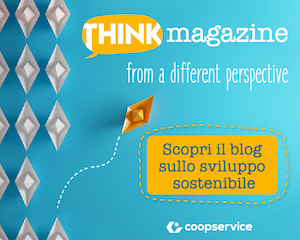Ricerca Utilizzo di Internet: Conclusioni
Limiti
Nonostante il seguente lavoro di ricerca sia piuttosto eterogeneo considerato che tratta aspetti diversificati dell’utilizzo di Internet, dall’ambivalenza uso funzionale-disfunzionale, passando per i fattori personali che mediano l’approccio con gli strumenti della Rete per concludere con la definizione della differenza tra uno problematico e dipendenza presenta lo stesso dei limiti. Il più evidente è senza dubbio l’impossibilità di analizzare la dipendenza da Internet nel campione di ricerca in conseguenza della mancanza di una scala ad hoc nello strumento di misura. Gli item del questionario, secondo la scala di misura di Caplan (2010), sono costruiti per rivelare l’uso problematico e nel software SPSS con cui si sono svolte le analisi statistiche è assente la variabile “Dipendenza da Internet”. Parallelamente a ciò è assente anche una scala di misura ad hoc per valutare il capitale sociale, uno dei costrutti più interessanti dell’intero studio. Abbiamo ovviato analizzando la variabile supporto sociale online, considerato che il capitale sociale permette di ricevere sostegno sociale sia riguardo alla raccolta di informazione che alla percezione di supporto emotivo. Un ultimo limite può essere quello di non aver valutato statisticamente quanto e in che modo l’utilizzo di Internet condiziona la performance lavorativa o didattica fornendo magari anche dati quantitativi in merito. Questo sarebbe stato un aspetto concreto molto interessante da valutare considerata l’importanza che ricoprono il percorso universitario e quello lavorativo durante l’emerging adulthood.
Conclusioni
Lo studio di ricerca si è focalizzato su una precisa fascia d’età, l’emerging adulthood in cui gli individui devono affrontare continue sfide di sviluppo per giungere alla costruzione di una nuova identità. In questo senso Internet può costituire un utile organo funzionale o essere sfruttato in maniera disfunzionale conducendo l’utente verso un PIU o in casi estremi ad una vera e propria dipendenza da Internet. La ricerca ha individuato alcuni fattori che mediano l’utilizzo di Internet da parte degli emerging adults. La disposizione delle ipotesi ha seguito un ordine logico per delineare gradualmente il processo che porta le persone a fare un uso problematico della Rete. I risultati dimostrano che un basso supporto sociale sperimentato nella vita offline porta gli individui a cercare di colmare questa mancanza attraverso il supporto sociale online. Questo aspetto produce benessere per l’utente il quale però deve fare attenzione ai rischi che comporta. E’ stato, infatti, dimostrato che il supporto sociale online predice positivamente lo sviluppo di PIU. Parallelamente la ricerca conferma la correlazione dell’uso problematico di Internet con altri due fattori, quali il preferire interazioni online piuttosto che quelle faccia a faccia e la mindfulness. L’individuo ricevendo online il supporto sociale di cui ha bisogno attraverso i SNS, Facebook nello specifico, può aumentare progressivamente l’utilizzo di Internet arrivando al punto di preferire gli scambi conversazionali online. Questo avviene quando il l’utente è in possesso di un basso livello di mindfulness, in base al quale non riesce a regolare adeguatamente il proprio comportamento online sviluppando un uso problematico di Internet. Allo stesso tempo è stata rilevata una correlazione positiva tra frequente utilizzo di Facebook e bassa autostima. Gli individui cercano di compensare online una povera immagine sciale offline. Il disegno di ricerca non si è focalizzato interamente sulla sfera negativa dell’Utilizzo di Internet ma si è cercato di dimostrare che l’utilizzo dei SNS, Facebook nello specifico, predice direttamente lo sviluppo del capitale sociale e i risultati hanno confermato l’ipotesi. In questo senso l’individuo attraverso le piattaforme di Social Networking riesce sia a raccogliere informazioni importanti per risolvere situazioni critiche che a ricevere supporto emotivo. Vieni, quindi, posta attenzione all’ambivalenza degli strumenti della Rete che se utilizzati in modo funzionale possono offrire risorse importanti per aiutare gli emerging adults nel loro percorso di ricerca di identità. Questo studio deve fornire uno stimolo a riporre sempre maggiore attenzione ad una fascia d’età che presenta grandi difficoltà al suo interno. Secondariamente riguardo alla parte disfunzionale dell’utilizzo di Internet bisognerà costruire una scala ad hoc e validata in diversi paesi per valutare la dipendenza da Internet e i suoi effetti sulla vita delle persone sempre ben consapevoli della differenza rispetto all’uso problematico (PIU).
Bibliografia
Agarwal, R, & Karahanna, E. (2000). “Time flies when you’re having fun: Cognitive absorption and beliefs about information technology.” MIS Quarterly, 24, 665-694.
Andreassen, C. S., Billieux, J., Griffiths, MD., & Kuss, DJ. Demetrovics, Z., Mazzoni, E., & Pallesen, S. (2016). The Relationship Between Addictive Use of Social Media and Video Games and Symptoms of Psychiatric Disorders: A Large-Scale Cross-Sectional Study. Psychology of Addictive Behaviors. American Psychological Association, 30(2), 252–262.
Andreassen, C. S., & Pallesen, S. (2014). Social network site addiction: An overview. Current Pharmaceutical Design, 20, 4053–4061.
Arnett, J. J. (2000). Emerging adulthood: a theory of development from the late teens through the twenties. American Psychologist, 55, 469–480.
Arnett, J. J. (2007). Emerging adulthood: What is it, and what is it good for? Child development perspectives. Society for Research in Child Development, 1(2), 68–73.
Aydin, S. (2012). A review of research on Facebook as an educational environment. Educational Technology Research and Development, 60(6), 1093–1106.
Balague, C., & Fayon, D. (2010). Facebook, Twitter et les autres… Intégrer les réseaux sociaux dans une stratégie d’entreprise. Paris: Pearson.
Bargh, J. A., McKenna, K.Y. & Fitzsimons, G. M. (2002). Can you see the real me? Activation and expression of the “true self ” on the Internet. Journal of Social Issues, 58, 1, 33–48.
Berra, L. (2002). La terapia con ipnosi del disturbo ossessivo-compulsivo (DOC).
B?achnio, A., Przepiorka, A., & Pantic, I. (2015). Internet use, Facebook intrusion, and depression: results of a cross-sectional study. European Psychiatry, 2-5.
B?achnio, A., Przepiorka, A., & Pantic, I. (2016). Association between Facebook addiction, self esteem and life satisfaction: A cross-sectional study .Computers in Human Behavior, 55, 701-705.
Bourdieu, P. (1986). The Forms of Capital. In Handbook of Theory and Research for the Sociology of Education. New York: Greenwood Press.
Boyd, D. M. & Ellison, N. B. (2007). Social network sites: definition, history, and scholarship. Journal of Computer?Mediated Communication, 13, 210–230.
Bratter, T. E., & Forrest, G. G. (1985). Alcoholism and Substance Abuse: Strategies for Clinical Intervention, Free Press, New York.
Brennan, P.F., Ripich, S., Moore, S.M., (1991). The use of home-based computers to support persons living with AIDS/ARC. Journal of Community Health Nursing 8, 3–14.
Brennan, P.F., Moore, S.M., Smyth, K., (1995). The effects of a special computer network on caregivers of persons with Alzheimer’s disease. Nursing Research, 44, 166–172.
Cantelmi, T., & Talli, M. (2007). Anatomia di un problema. Una review sui fenomeni psicopatologici Internet-correlati. Psicotech, 2, 9-10.
Caplan, S. E. (2003). Preference for online social interaction a theory of problematic internet use and psychosocial well-being. Communication Research, 30(6), 625-648.
Caplan, S.E. (2010). “Theory and measurement of generalized problematic Internet use: a two-step approach.” Computers in Human Behavior, 26(5), 1089–1097.
Casale, S., Fioravanti, G., Flett, G. L., & Hewitt, P. L. (2014). From socially prescribed perfectionism to problematic use of internet communicative services: The mediating roles of perceived social support and the fear of negative evaluation. Addictive behaviors, 39(12), 1816-1822.
Cecil, C. A., Barker, E. D., Jaffee, S. R., & Viding, E. (2012). Association between maladaptive parenting and child self-control over time: Cross-lagged study using a monozygotic twin difference design. The British Journal of Psychiatry, 201(4), 291–297.
Chan, M. (2015). Multimodal connectedness and quality of life: Examining the influences of technology adoption and interpersonal communication on wellbeing across the life span. Journal of Computer-Mediated Communication, 20(1), 3-18.
Chen, H., Wigand, R.T., & Nilan, M.S. (1999). “Optimal experience of Web activities.” Computers in Human Behavior, 15(5), 585–608.
Chen, S.H., Weng L.C., Su Y.J., Wu H.M., Yang P.F. (2003). Development of Chinese Internet Addiction Scale and its psychometric study. Chinese Journal of Psychology, 45, 279-94.
Chiu C.M., Hsu M.H., Wang T.G. (2006). Understanding knowledge sharing in virtual communities: an integration of social capital and social cognitive theories. Decision Support Systems, 42, 1872–1888.
Choi, D., Kim, H., & Kim, J. (2000). “A Cognitive and Emotional Strategy for Computer Game Design.” Journal of MIS Research, 10(1), 165–187.
Chou, C., Condron, L., & Belland, JC. (2005). A Review of the Research on Internet Addiction. Educational Psychology Review, 17 (4).
Cloninger, C. R., Svrakic, D. M., & Przybeck, T. R. (1993). A psychobiological model of temperament and character. Archives of general psychiatry, 50(12), 975-990.
Cohen, S. E., & Syme, S. (1985). Social support and health. San Diego, CA, US: Academic Press.
Cohen, S., & Wills, T. A. (1985). Stress, social support, and the buffering hypothesis. Psychological bulletin, 98(2), 310.
Creemers, D.H.M., Scholte, R.H.J., Engels, R.C.M.E, Prinstein, M.J., & Wiers, R.W. (2012). “Implicit and explicit self-esteem as concurrent predictors of suicidal ideation, depressive symptoms, and loneliness.” Journal of behavior therapy and experimental psychiatry, 43, 638-646.
Davis, R. A. (2001). “A cognitive-behavioral model of pathological Internet use.” Computers in Human Behavior, 17(2), 187–195.
Dewald, J. F., Meijer, A. M., Oort, F. J., Kerkhof, G. A., & Bogels, S. M. (2010). The influence of sleep quality, sleep duration and sleepiness on school performance in children and adolescents: a meta-analytic review. Sleep Medicine Reviews, 14(3), 179–189.
Donald, C.A. and Ware, J.E. Jr. (1984). The measurement of social support. Res Community Mental Health; 4: 334–335.
Douglas, A. C., Mills, J. E., Niang, M., Stepchenkova, S., Byun, S., Ruffini, C., Blanton, M. (2008). Internet addiction: Meta-synthesis of qualitative research for the decade 1996–2006. Computers in Human Behavior, 24, 3027–3044.
Downes, S. (2007). Places to go: Facebook. Innovate: Journal of Online Education, 4(1), 1–5. Ehrenberg, A., Juckes, S., White, K. M., & Walsh, S. P. (2008). Personality and self-esteem as predictors of young people’s technology use. Cyberpsychology & Behavior, 11, 739-741.
Ekbia, H., & Nardi, B. (2012). Inverse Instrumentality: How Technologies Objectify Patients and Players. In: Leonardi PM, Nardi BA, Kallinikos J (Eds.), Materiality and Organizing: Social Interaction in a Technological World. Oxford University Press, UK, 237-244.
Ellison, N. B., Steinfield, C., & Lampe, C. (2007).The benefits of Facebook friends: social capital and college students’ use of online social network sites. Journal of Computer- Mediated Communication, 12(4), 1143–1168.
Elphiston, R. A., & Noller, P. (2011). Time to Face It! Facebook Intrusion and the Implications for Romantic Jealousy and Relationship Satisfaction. Cyberpsychology, Behavior, and Social Networking, 14(11), 631-635.
Ferraro, G., Caci, B., D’Amico, A., & Di Blasi, M. (2006). Internet addiction Disorder: An italian study. Psicotech, 1, 7–25.
Fioravanti, G., Primi, C., & Casale, S. (2013). “Psychometric evaluation of the generalized Problematic Internet Use Scale 2 in an Italian sample.” Cyberpsychology, Behavior and Social Networking, 16(10), 761-766.
Frozzi, G. & Mazzoni, E. (2011). On the importance of social network sites in the transitions which characterize “emerging adulthood”. ICST Transactions on e-Education and e-Learning, 11.
Gallienne, R.L., Moore, S.M., Brennan, P.F., (1993). Alzheimer’s caregivers: psychosocial support via computer networks. Journal of Gerontology Nursing, 19, 15–22.
Goldberg, I. (1996), Internet addiction disorder, http://www.aspen.uml.edu/www/counseling/netdisorder.html
Goldscheider, F. (1997). Recent changes in U.S. young adult living arrangements in comparative perspectives. Journal of Family Issues, 18, 708–724.
Goodman, V. (1990). Addiction: definition and implications. British Journal of Addiction, 85, 1403-1408.
Gottfredson, M. R., & Hirschi, T. (1990). A general theory of crime. Stanford, CA: Stanford University Press.
Granovetter, M. (1982). The strength of weak ties: a network theory revisited. In P. V. Mardsen &N. Lin (Eds), Social structure and network analysis, 105–130.
Grieve, R., Indian, M., Witteveen, K., Tolan, G. A., & Marrington, J. (2013). Face-to face or Facebook: can social connectedness be derived online? Computers in Human Behavior, 29(3), 604-609.
Ha, J. H., Kim, S. Y., Bae, S. C., Bae, S., Kim, H., Sim, M., & Cho, S. C. (2007). Depression and Internet addiction in adolescents. Psychopathology, 40(6), 424-430.
Haythornthwaite, C. (2002). Strong, weak, and latent ties and the impact of new media. The Information Society, 18, 5, 385–401.
Haythornthwaite, C. (2005). Social networks and Internet connectivity effects. Information, Communication, & Society, 8, 2, 125–147.
Heatherton, T. F. (2011). “Neuroscience of self and self-regulation.” Annual Review of psychology, 62, 363-390.
Heatherton, T. F., & Wyland, C. (2003). Assessing self-esteem. In S. Lopez and R. Snyder, (Eds.), Assessing positive psychology. Washington, 219 –233.
Hendry, L. & Kloep, M. (2002). Life-span development: challenges, risks and resources. London and New York: Thomson.
Hoffman, D. L., & Novak, T.P. (1996). “Marketing in Hypermedia Computer-Mediated Environments: Conceptual Foundations.” Journal of Marketing, 60(3), 50–68.
Houston, T.K., Cooper, Ford, D.E., (2002). Internet support groups for depression: a 1-year prospective cohort study. The American Journal of Psychiatry, 159 (12), 2062–2068.
Huang, M. H. (2003). “Designing Website Attributes to Induce Experiential Encounters” Computers in Human Behavior, 19(4), 425–442.
Kardefelt-Winther, D. (2014). “The moderating role of psychosocial well-being on the relationship between escapism and excessive online gaming.” Computers in Human Behavior, 38, 68–
Khim, N., Benedet, C., Kim, S., Kheng, S., Siv, S., Leang, R., Lek, S., Muth, S., Chea, N., Chuo, C. M., Duong, S., Kerleguer, A., Tor, P., Chim, P., Canier, L., Witkowski, B., Taylor, W. R., & Ménard, D. (2013). Plasmodium falciparum and Plasmodium vivax malaria-infected Cambodian patients, 12, 10-171.
Kuss, D. J., & Griffiths, M. D. (2011). Online social networking and addiction – A review of the psychological literature. International Journal of Environmental Research and Public Health, 8(9), 3528-3552.
Klingensmith, C. L. (2010). 500 Friends and Still Friending: The Relationship between Facebook and College Students’ Social Experiences. Honor project.
Ko C.H., Yen J.Y., Yen C.F., Chen C.S., Wang S.Y. (2008). The association between Internet addiction and belief of frustration intolerance: Tue gender difference. Cyberpsychology & Behavior; 11(3); 273-8.
Kuss, D. J., Griffiths, M. D., Karila, L. & Billieux, J. (2014). Internet addiction: A systematic review of epidemiological research for the last decade. Current Pharmaceutical Design, 20, 4026–4052.
LaRose, M., Mastro, D., & Eastin, M.S. (2001). “Understanding internet usage: A social-cognitive approach to uses and gratifications.” Social Science Computer Review, 19(4), 395-413.
Leary, M. R., Tambor, E. S., Terdal, S. K., & Downs, D. L. (1995). Self-esteem as an interpersonal monitor: The sociometer hypothesis. Journal of Personality and Social Psychology, 68, 518–530.
Leung, L., & Lee, P. S. N. (2005). Multiple determinants of life quality: The roles of Internet activities, use of new media, social support, and leisure activities. Telematics and Informatics, 22, 161–180.
Li, C., Dang, J., Zhang, X., Zhang, Q., & Guo, J. (2014). Internet addiction among Chinese adolescents: The effect of parental behavior and selfcontrol. Computers in Human Behavior, 41,1-7.
Littel, M., van den Berg, I., Luijten, M., van Rooij, A. J., Keemink, L., & Franken, I. H. A. (2012). Error processing and response inhibition in excessive computer game players: An event related potential study. Addiction Biology, 17, 934–947.
Macchia, V.(2013). Individuazione precoce del rischio ADHD e “Laboratorio di Attenzione” nella scuola dell’infanzia. Milano: Franco Angeli.
MacKillop, J., & Anderson, E.J. (2007). “Further psychometric validation of the mindful attention awareness scale (MAAS).” Journal of Psychological Behavior Assessment, 29(4), 289-293.
Mazzoni, E., Baiocco, L., & Benvenuti, M. (2015). Online Life: Between Inverse Instrumentality and Functional Organs. MOJ Addiction Medicine & Therapy, 1, 2–2015.
Mazzoni, E., Baiocco, L., & Cannata, D. (2016), Focused, not lost: the mediating role of Temporal Dissociation and Focused Immersion on the Problematic Internet Use. Behaviour & Information Technology.
Mazzoni, E., Baiocco, L., Cannata, D., & Dimas, I. (2015). Is internet the cherry on top or a crutch? Offline social support as moderator of the outcomes of online social support on Problematic Internet Use. Computers in Human Behavior, 56, 369-374.
Mazzoni, E., & Iannone, M. (2014). “From high school to university: Impact of social networking sites on social capital in the transitions of emerging adults.” British Journal of Educational Technology, 45(2), 303-315.
Montag, C., Flierl, M., Markett, S., Walter, N., Jurkiewicz, M., & Reuter, M. (2011). “Internet addiction and personality in first-person-shooter video gamers”. Journal of Media Psychology. 23,163-73.
Montag, C., Jurkiewicz. M., & Reuter, M. (2010). “Low self-directedness is a better predictor for problematic internet use than high neuroticism.” Computers in Human Behavior, 26(6), 1531-1535.
Nakamura, J., & Csikszentmihalyi, M. (2002). “The Concept of flow.” In Handbook of positive psychology, edited by C.R. Snyder and S.J. Lopez, 89-105. Oxford, UK: Oxford University Press.
Novak, T.P., & Hoffman, D.L. (2003). “The Influence of Goal-Directed and Experiential Activities on Online Flow Experiences.” Journal of Consumer Psychology, 13(1), 3-16.
Oh, H. J., Ozkaya, E., & LaRose, R. (2014). How does online social networking enhance life satisfaction? The relationships among online supportive interaction, affect, perceived social support, sense of community, and life satisfaction. Computers in Human Behavior, 30, 69- 78.
Putnam, R. (2000). Bowling alone: the collapse and revival of American Community. New York: Simon & Schuster.
Rettie, R. (2001). “An exploration of flow during Internet use.” Internet Research: Electronic Networking Applications and Policy, 11(2), 103-113.
Roblyer, M. D., McDaniel, M., Webb, M., Herman, J., & Witty, J. V. (2010). Findings on Facebook in higher education: A comparison of college faculty and student uses and perceptions of social networking sites. Internet and Higher Education, 13(3), 134–140.
Rosenberg, M. (1989). “Society and the adolescent self-image.” (Rev. ed.) Middletown, CT: Wesleyan University Press.
Rozzell, B., Piercy, C. W., Carr, C. T., King, S., Lane, B. L., Tornes, M., et al. (2014). Notification pending: online social support from close and nonclose relational ties via Facebook. Computers in Human Behavior, 38, 272-280.
Rutkowski A, Saunders C, Vogel D, & van Genuchten, M. (2007). “Is It Already 4 a.m. in Your Time Zone?” Focus Immersion and Temporal Dissociation in Virtual Teams. Small Group Research, 38(1), 98-129.
Shapira, N. A., Goldsmith, T. D., Keck, P. E., Khosla, U. M., & McElroy, S. L. (2000). Psychiatric features of individuals with problematic Internet use. Journal of Affective Disorders, 57, 267–272.
Sariyska, R., Reuter, M., Lachmann, B., & Montag, C. (2015). Attention deficit/hyperactivity disorder is a better predictor for problematic Internet use than depression: evidence from Germany. Journal of Addiction Research & Therapy, 6(209), 2.
Schaffhauser, D. (2009). Boundless opportunity. The Journal, 36(9), 13–18.
Scherer, K. (1997). College life online: Healthy and unhealthy Internet use. J. College Stud. Dev. 38(6), 655–665.
Shin, N. (2006). “Online Learner’s Flow Experience: An Empirical Study.” British Journal of Educational Technology, 37(5), 705–720.
Smahel, D., Brown, B. B., & Blinka, L. (2012). Associations between online friendship and Internet addiction among adolescents and emerging adults. Developmental Psychology, 48(2), 381–388.
Skadberg, X.Y., & Kimmelb, J.R. (2004). “Visitors’ flow experience while browsing a Web site: Its measurement, contributing factors and consequences.” Computers in Human Behavior, 20(3), 403-422.
Solomon, S., Greenberg, J., & Pyszczynski, T. (1991). A terror management theory of social behavior: The psychological functions of self-esteem and cultural worldviews. Advances in Experimental Social Psychology, 24, 159.
Stephenson, W. (1988). The Play Theory of Mass Communication, Transaction Books, New Brunswick, NJ.
Stieger, S., & Burger, C. (2010). Implicit and explicit self-esteem in the context of Internet addiction. CyberPsychology, Behavior, and Social Networking, 13, 681–688.
Subrahmanyama, K., Reich, S. M., Waechter, N., & Espinoza, G. (2008). Online and offline social networks: use of social networking sites by emerging adults. Journal of Applied Developmental Psychology, 29, 420–433.
Suler, J. R. (1999). To get what you need: healthy and pathological Internet use. Cyberpsychology & Behaviour, 2(5), 355–393.
Swickert, R. J., Hittner, J. B., Harris, J. L., & Herring, J. A. (2002). Relationships among internet use, personality, and social support. Computers in human behavior, 18(4), 437-451.
Taranto, G., & Abbondanza, M. (2009). Powering students up. Principal Leadership, 10(4), 38–42.
Valkenburg, P.M., Peter, J., & Schouten, A.P. (2006). “Friend networking sites and their relationship to adolescents’ well-being and social self-esteem.” Cyberpsychology & Behavior, 9(5), 584-590.
Vogel, E. A., Rose, J. P., Roberts, L. R., & Eckles, K. (2014). Social comparison, social media, and self-esteem. Psychology of Popular Media Culture, 3, 206–222.
Wang, E. S. T., & Wang, M. C. H. (2013). Social support and social interaction ties on internet addiction: Integrating online and offline contexts. Cyberpsychology, Behavior, and Social Networking, 16(11), 843-849.
Wellman, B., Boase, J., & Chen, w. (2002). The networked nature of community: online and offline. It &Society, 1(1), 151-165.
Widyanto, L., & Griffiths, M. (2006). “Internet addiction”: A critical review. International Journal of Mental Health and Addiction, 4, 31–51.
Woszcynski, A. B., Roth, L. P., & Segars, A. H. (2002). “Exploring the Theoretical Foundations of Playfulness in Computer Interactions.” Computers in Human Behavior 18(4), 369–388.
Yen, J.-Y., Yen, C.-F., Chen, C.-C., Chen, S.-H., & Ko, C.-H. (2007). Family factors of Internet addiction and substance use experience in Taiwanese adolescents. Cyber Psychology & Behavior, 10, 323–329.
Young, K. S. (1996a, August). Internet addiction: The emergence of a new clinical disorder. Poster presented at the 104th American Psychological Association Annual Convention, Toronto, Canada.
Young, K. S. (1998). Internet addiction: The emergence of a new clinical disorder. Cyberpsychology Behaviour. 1(3), 237–244.
Young, K. S. (2009). Internet addiction: diagnosis and treatment consideration. Journal of Contemporary Psychotherapy, 39, 241-246.
Young, K. S., & Rogers, RC. (1998).The Relationship between Depression and Internet Addiction. CyberPsychology & Behavior, 1(1), 25-28. doi:10.1089/cpb.1998.1.25.
Yurchisin, J., & Johnson, K. K. P. (2004). “Compulsive buying behavior and its relationship to perceived social status associated with buying, materialism, self-esteem, and apparel product involvement.” Family and Consumer Sciences Research Journal 32(3), 291-314.
Zanardi, D. M. (2013). Utilizzo patologico di Internet: definizione, diagnosi e terapia.
Zermatten, A., & Van der Linden, M. (2008). Impulsivity in non-clinical persons with obsessive compulsive symptoms. Personality and Individual Differences, 44, 1824–1830.
Zywica, J., & Danowski, J. (2008). The Faces of Facebookers: Investigating Social Enhancement and Social Compensation Hypotheses; Predicting Facebook™ and Offline Popularity from Sociability and Self-Esteem, and Mapping the Meanings of Popularity with Semantic Networks. Journal of Computer-Mediated Communication, 14(1), 1-34.
© Emerging adults ed utilizzo di Internet: organo funzionale o strumentalità inversa? – Andrea Pivetti







